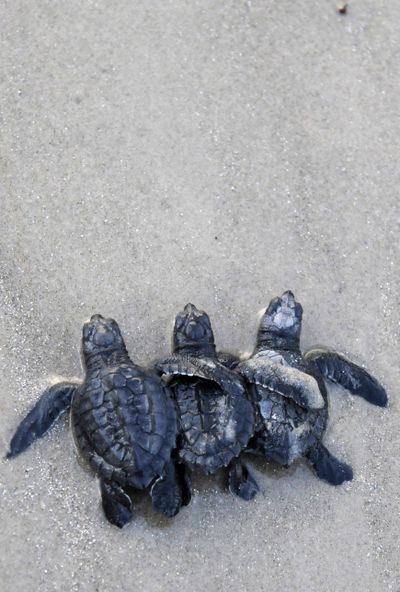Small amount of oil seen on Gulf surface

ATLANTA – With the BP oil well sealed for 11 days, federal officials said Monday that much of the surface oil has broken up into thousands of small patches that are proving difficult to hunt down and clean up.
Rear Adm. Paul Zukunft, the federal on-scene coordinator, said Monday that the development was “actually a good news story pertaining to this oil spill.”
Zukunft, in a news conference, said he spent five hours Sunday flying over the water looking for oil, and found only one “skimmable amount” of oil off the Louisiana coast.
The capped well, aggressive cleanup and dissipation of the light, sweet crude, he said, have resulted in “very, very moderate amounts, and less concentrated amounts of oil on the surface.”
The National Oceanic and Atmospheric Administration estimated that crews would continue to see surface oil for four weeks, Zukunft said. But he said that estimate may be too conservative. Crews have not used dispersants on the oil in more than a week, he said, because “the oil has weathered to a point now where it’s inefficient and ineffective.”
Tempering the good news, however, are ongoing concerns about the impacts of massive plumes of oil that had been discovered beneath the ocean surface since the April 20 explosion of the Deepwater Horizon rig. In late May and early June, researchers from the University of Georgia found one of these plumes estimated to be 15 miles long, five miles wide and 300 feet thick, at depths of between 2,300 and 4,200 feet.
David Pettit, an attorney with the Natural Resources Defense Council, said that with less oil on the water’s surface, “the chances of a big slug of oil making its way to the beaches and wetlands and the like is reduced.
“But what we don’t know is what’s going to happen to these enormous undersea plumes. … Will they move with the currents? Will they wash up someday? Will it all sink to the bottom and smother the sea life down there? We don’t know.”
In a separate news conference Monday, Thad Allen, the federal spill response chief, said that while the 794 skimmers would keep hunting for small surface oil patches, crews would also focus on “the oil we can’t see,” with the help of NOAA, which is conducting what he called an “aggregate MRI” of the water column in attempt to find the undersea oil. “We’re going to have tar balls and other kinds of impacts that are going to go on for a long, long time,” Allen said. “… There’s still a lot of oil that’s unaccounted for.”